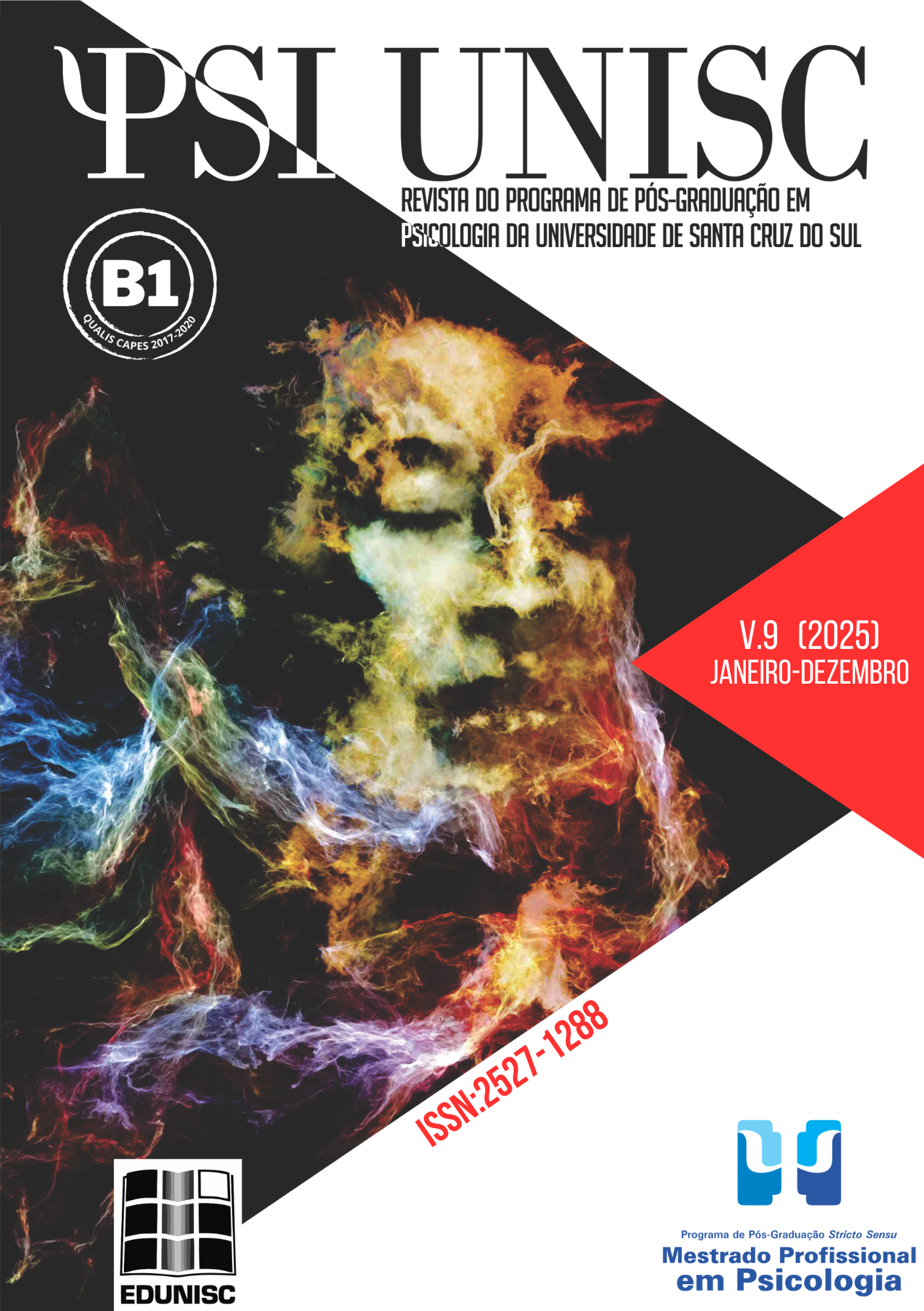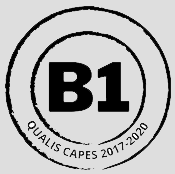Verbal language in autistic spectrum disorder: a case study
DOI:
https://doi.org/10.17058/psiunisc.v9i.18596Keywords:
autism spectrum disorder, social interaction, language artsAbstract
One of the central features in identifying ASD individuals is their peculiar communication. Non-verbal language indicators for the diagnosis of ASD children have been well documented in observational research, using social interaction contexts. However, there is a need to also investigate the verbal aspects through these methodologies. The main objective of this study is to identify the skills and sociopragmatic commitments in the verbal language of an ASD child, in comparison with a child without ASD, in the context of interaction with their mothers. It is intended to identify repetitive and stereotyped behaviors in the child's verbal language and behavior, as well as difficulties in conversational skills. As a secondary objective, it is intended to evaluate the adequacy of an observational protocol developed to evaluate the sociopragmatic aspects in the verbal language ASD children. This is a comparative, descriptive and exploratory case study. Two children (one diagnosed with ASD and the other without it), aged 5 years old, and their mothers, participated in the study. The results of the observation sessions showed that it was possible to identify sociopragmatic commitments specifically in the ASD child. The two cases differed in the way the ASD child interacted with his mother (joint attention difficulties, deficits in prosody, absence of narratives, and the presence of stereotyped expressions and echolalia). Difficulty in coordinating eye gaze with speech was also observed. The protocol seems to have fulfilled its purpose, but still needs revision.
Downloads
References
American Psychiatric Association. (2022). Diagnostic and statistical manual of mental disorders (5ªed.) text revision. Washington: American Psychiatric Association.
Backes, B. (2016). Linguagem e transtorno do espectro autista: aquisição e perda das primeiras palavras (Tese de doutorado). Universidade Federal do Rio Grande do Sul. Recuperado de: https://lume.ufrgs.br/handle/10183/186102
Balestro, J. I., & Fernandes, F. D. M. (2019). Percepção de cuidadores de crianças com Transtorno do Espectro do Autismo quanto ao perfil comunicativo de seus filhos após um programa de orientação fonoaudiológica. CoDAS, 31(1), e20170222. Epub March 07, 2019. https://doi.org./10.1590/2317-1782/20182018222
Barone, R., Spampinato, C., Pino, C., Palermo, F., Scuderi, A., Zavattieri, A., Gulisano, M., Giordano, D., & Rizzo, R. (2019). Online comprehension across different semantic categories in preschool children with autism spectrum disorder. PloS one, 14(2), e0211802. https://doi.org./10.1371/journal.pone.0211802
Bosa, C., Backes, B., Prando, M. & Salles, J. F. (em preparação). Protocolo de observação de indicadores de TEA na linguagem verbal. [Manuscrito não publicado].
Bosa, C. A. & Salles, J. F. (2018). Sistema Protea -R de avaliação da suspeita de transtorno do espectro autista. São Paulo: Vetor.
Braconnier, M. L., & Siper, P. M. (2021). Neuropsychological assessment in autism spectrum disorder. Current psychiatry reports, 23(10), 1-9. https://doi.org/10.1007%2Fs11920-021-01277-1
Deliens, G., Papastamou, F., Ruytenbeek, N., Geelhand, P., & Kissine, M. (2018). Selective Pragmatic Impairment in Autism Spectrum Disorder: Indirect Requests Versus Irony. Journal of Autism and Developmental Disorders, 48(9), 2938–2952. https://doi.org/10.1007/s10803-018-3561-6
Gerbassi, T. N. (2021). Atenção compartilhada nas relações triádicas: um estudo a partir da mãe e seus filhos. [Dissertação de Mestrado, Universidade de Brasília]. Repositório UnB. https://repositorio.unb.br/handle/10482/41466
Hage, S. V. R., Sawasaki, L. Y., Hyter, Y., & Fernandes, F. D. M. (2021). Social Communication and pragmatic skills of children with Autism Spectrum Disorder and Developmental Language Disorder. CoDAS (Vol. 34). Sociedade Brasileira de Fonoaudiologia.
Kenan, N., Zachor, D. A., Watson, L. R., & Ben-Itzchak, E. (2019). Semantic-pragmatic impairment in the narratives of children with autism spectrum disorders. Frontiers in psychology, 10, 2756. https://doi.org/10.3389%2Ffpsyg.2019.02756
Krug DA, Arick JR, Almond P. (1980) Behavior checklist for identifying severely handicapped individuals with high levels of autistic behavior. J Child Psychol Psychiatry. 1980;21(3):221-9. https://doi.org/10.1111/j.1469-7610.1980.tb01797.x.
Krug D, Arick J, Almond P. (1993) Autism Behavior Checklist – ABC. In: Krug DA, Arick J, Almond P. Autism Screening Instrument for Educational Planning- ASIEP-2. Austin, Texas: PRO-ED.
Maenner M. J, Warren Z., Williams A. R. (2023). Prevalence and Characteristics of Autism Spectrum Disorder Among Children Aged 8 Years — Autism and Developmental Disabilities Monitoring Network, 11 Sites, United States, 2020. MMWR Surveill Summ 2023;72(No. SS-2):1–14. http://dx.doi.org/10.15585/mmwr.ss7202a1
Marteleto, M. R. F., & Pedromônico, M. R. M. (2005). Validity of autism behavior checklist (ABC): preliminary study. Brazilian Journal of Psychiatry, 27(4), 295-301. https://doi.org/10.1590/S1516-44462005000400008
Mergl, M., & Azoni, C. A. S. (2015). Tipo de ecolalia em crianças com Transtorno do Espectro Autista. Revista CEFAC, 17(6), 2072-2080. https://doi.org/10.1590/1982-021620151763015
Oliveira, A. F. T. de M., Costa, M. L. G. da, & Silva, K. C. da. (2019). Contribuições para se compreender a linguagem das pessoas com transtorno do espectro do autismo (TEA): uma análise da autobiografia de Nicolas Brito. Revista Educação Especial Em Debate, 4(7), 40–58. https://periodicos.ufes.br/reed/article/view/26518
Parsons, L., Cordier, R., Munro, N., Joosten, A., & Speyer, R. (2017). A systematic review of pragmatic language interventions for children with autism spectrum disorder. PloS one, 12(4), e0172242. https://doi.org/10.1371%2Fjournal.pone.0172242
Romeira, G. M., Steigleder, B. G., Faro, K. C. A., & Bosa, C. A. (2018). Instruções para administração do protocolo de avaliação comportamental para crianças com suspeita de TEA – versão revisada – não verbal (PROTEA-R-NV). In: C. A., Bosa & J. F., Salles (Eds). Sistema PROTEA-R de avaliação da suspeita de Transtorno do Espectro Autista, (pp.63-72) São Paulo: Vetor
Sturrock, A., Marsden, A., Adams, C., & Freed, J. (2020). Observational and Reported Measures of Language and Pragmatics in Young People with Autism: A Comparison of Respondent Data and Gender Profiles. Journal of autism and developmental disorders, 50(3), 812–830. https://doi.org/10.1007%2Fs10803-019-04288-3.
Tomasello, M. (2019). Origens culturais da aquisição do conhecimento humano. São Paulo: WFM Martins Fontes. (Original publicado em 1999).
Vogindroukas I, Stankova M, Chelas EN, Proedrou A.(2022). Language and Speech Characteristics in Autism. Neuropsychiatr Dis Treat. 2022 Oct 14;18:2367-2377. doi: 10.2147/NDT.S331987.
Wilson, A. C., & Bishop, D. V. (2022a). Stage 2 registered report: investigating a preference for certainty in conversation among autistic adults. PeerJ, 10, e13110. https://doi.org/10.7717%2Fpeerj.13110
Wilson, A. C., & Bishop, D. V. (2022b). A novel online assessment of pragmatic and core language skills: An attempt to tease apart language domains in children. Journal of Child Language, 49(1), 38-59. https://doi.org/10.1017/S0305000920000690
Yin, R.K. (1989). Case study research: design and methods. Newbury Park, CA: Sage Publications
Zanon, R., Backes, B., & Bosa, C. (2014). Identificação dos primeiros sintomas do autismo pelos pais. Psicologia: Teoria e Pesquisa, 30(1), 25-33.https://doi.org/10.1590/S0102-37722014000100004
Downloads
Published
How to Cite
Issue
Section
License
The submission of originals to this journal implies the transfer, by the authors, of the printed and digital publication rights. The copyrights for the published articles are those of the author, with periodical rights on the first publication. Authors may only use the same results in other publications clearly indicating this journal as the medium of the original publication. Because we are an open access journal, we allow free use of articles in educational and scientific applications provided the source is cited under the Creative Commons CC-BY license.




